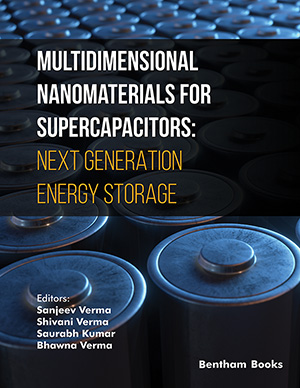Abstract
Energy storage devices are essential because of ever-worsening fossil fuel
depletion, increasing energy demand, and increasing environmental pollution. Maxwell
Technologies, NessCap, Ashai Glass, and Panasonic commercialize carbon-based
conventional supercapacitor devices. Carbon materials like graphene, carbon
nanotubes, and activated carbon, are considered favourable materials for bendable and
wearable electronic devices. The graphene, because of its high conductivity (thermal
~5 × 103
W m-1 K-1, electrical ~102
to 108
S m-1), extraordinary surface area
(theoretically ~2630 m2
g-1), outstanding electrochemical performance (100 to 200 F
g
-1), less weight compared to transition metal oxides (because of less molecular weight
of the carbon), outperform every other carbon material [1, 2]. The fiber-shaped
supercapacitors are considered a potential future candidate for electrochemical energy
storage systems and have gained considerable attention from the energy storage
research community. This chapter discusses the importance of fiber-shaped
supercapacitors, their evolution, various forms of their device structures, and
electrolytes used for fiber-shaped supercapacitors. Further, the wet-spinning technique
for synthesizing graphene fibers and their composites with pseudo-capacitive materials
are also discussed.
Keywords: Graphene, Supercapacitor, Carbon-based material, Energy storage, Flexible devices.

















